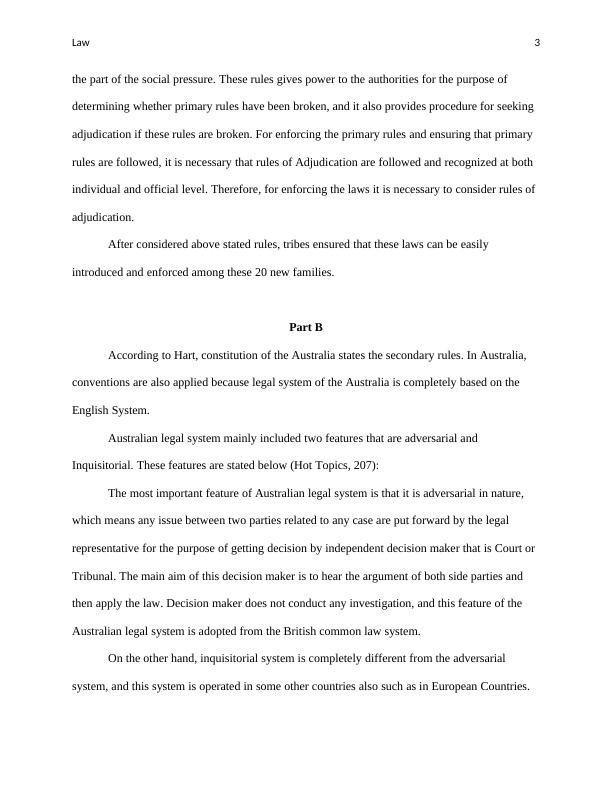Ask a question from expert
Law 9 Running Head: Law 1 Law Part A
12 Pages2969 Words151 Views
Australian Commercial Law (LAWS20058)
Added on 2020-02-24
About This Document
Law 9 Running Head: Law 1 Law Teacher Part A As per the proposal given by the legal philosopher Herbert Hart, there are almost three types of secondary rules which are required by under legal system to enforce the rules of law: Rule of recognition- this rule is developed for the purpose of preventing the uncertainty related to meaning of law. Therefore, it becomes necessary for tribe to develop rules of recognition for the purpose of providing the clear view of the laws stated in the constitution, and it also help
Law 9 Running Head: Law 1 Law Part A
Australian Commercial Law (LAWS20058)
Added on 2020-02-24
BookmarkShareRelated Documents
End of preview
Want to access all the pages? Upload your documents or become a member.
The Purpose of Introducing and Enforcing the Rules
|13
|2929
|33
The Rules for New Tribe and Group
|13
|2780
|483
Corporate and Commercial Law : Assignment
|12
|2687
|24
Australian commercial Law Assignment (PDF)
|9
|2478
|79
Australian commercial Law Assignment (PDF)
|10
|2510
|32
Commercial law | Sample Assignment
|9
|2962
|171



